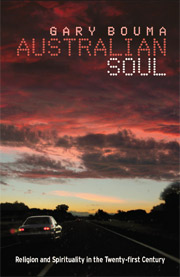Book contents
- Frontmatter
- Contents
- Tables and Figures
- Preface
- Acknowledgements
- 1 Introduction
- 2 Qualities of Australian religion and spirituality
- 3 Quantities of Australian religion and spirituality
- 4 Spirituality and cultural change
- 5 The changing social location of religion and spirituality
- 6 The mainstream: From Christendom to comfortable on the margins
- 7 Religion and spirituality respond to change
- 8 Religion, spirituality and Australian social policy
- 9 Signs of hope in the twenty-first century
- Further reading
- References
- Index
9 - Signs of hope in the twenty-first century
Published online by Cambridge University Press: 05 June 2012
- Frontmatter
- Contents
- Tables and Figures
- Preface
- Acknowledgements
- 1 Introduction
- 2 Qualities of Australian religion and spirituality
- 3 Quantities of Australian religion and spirituality
- 4 Spirituality and cultural change
- 5 The changing social location of religion and spirituality
- 6 The mainstream: From Christendom to comfortable on the margins
- 7 Religion and spirituality respond to change
- 8 Religion, spirituality and Australian social policy
- 9 Signs of hope in the twenty-first century
- Further reading
- References
- Index
Summary
The future of religion continues to be greatly debated (Davie, Heelas & Woodhead 2003). Some see the spread of Pentecostal Christianity and the renewed energy of Islam as signs of hope. Some are disquieted in fear that some in these intensely religious groups will seek to remove hard-won freedoms and lifestyles enjoyed by many. Youth are seen to be spiritual and even religious, or at least more than would have been expected (Hughes 2004b; Smith 2005). Others say that religion has been denatured by secularisation and has become too individual, no longer powerful, a passing private fad practised only by the few. They often define the necessary characteristics of religion in terms of their views of how it was at some time in the past, failing to notice that the shapes taken by the religious and spiritual have changed and that the ways groups influence governments and agencies has also changed and requires new approaches and analyses. However, religion and spirituality are living phenomena, rather like the societies that give them birth. As such they can be expected to grow, develop and evolve over time while retaining some recognisable continuity.
I have spoken of the religious and spiritual life of Australia. Beckford (2003: 11ff) says that religion is what a society defines it to be. These definitions and social constructions will vary. Those who insist on a persistent definition of religion include those religious practitioners and religious studies scholars who have a stake in a particular form of religion.
- Type
- Chapter
- Information
- Australian SoulReligion and Spirituality in the 21st Century, pp. 204 - 212Publisher: Cambridge University PressPrint publication year: 2006



